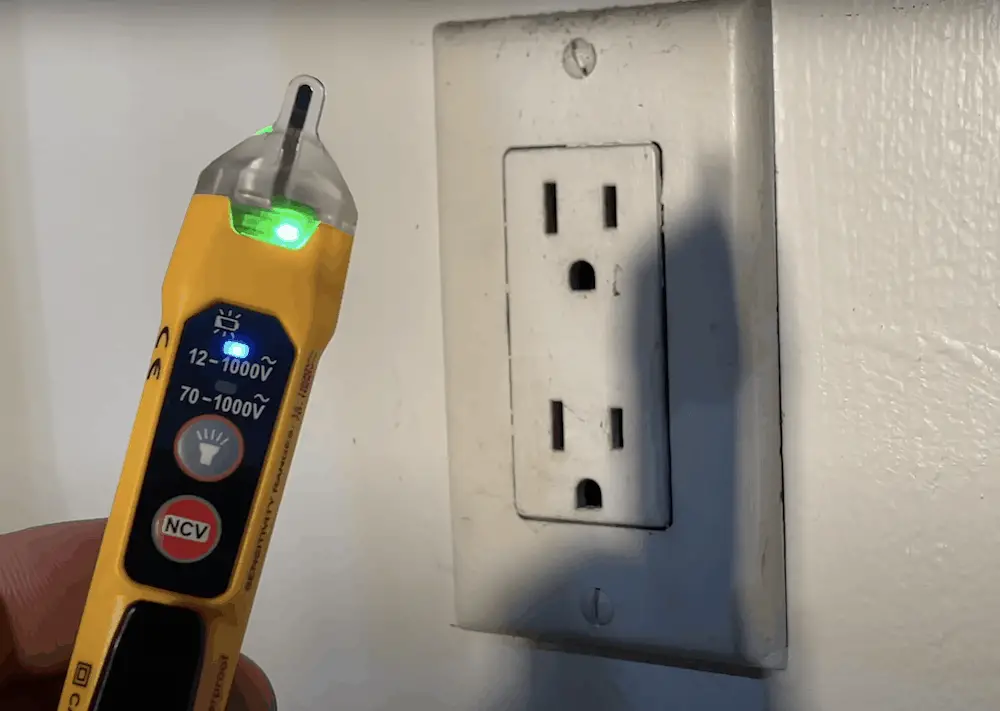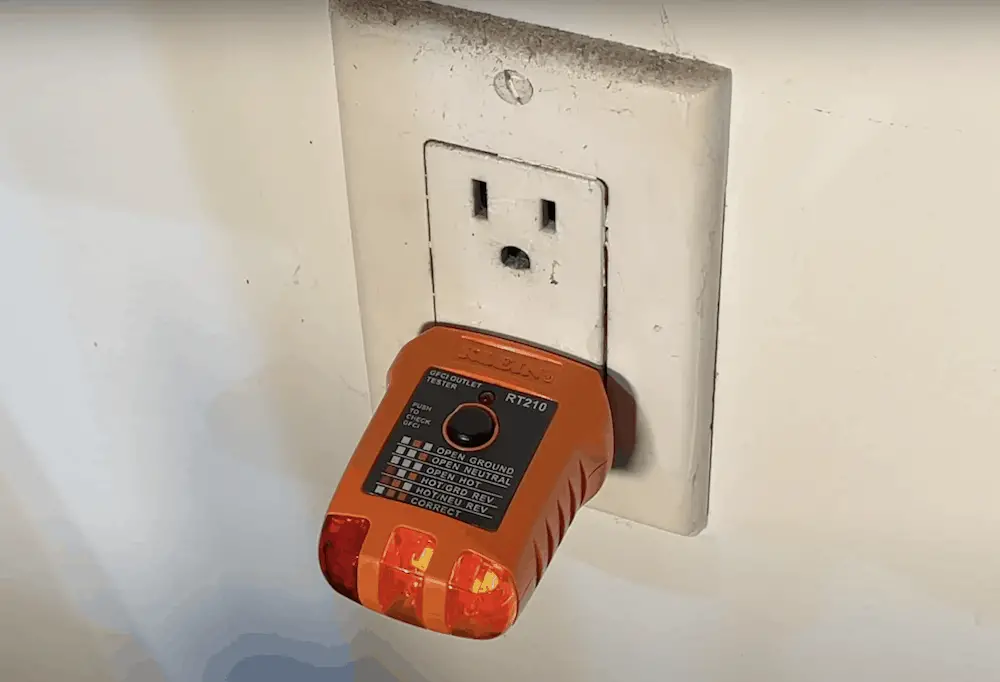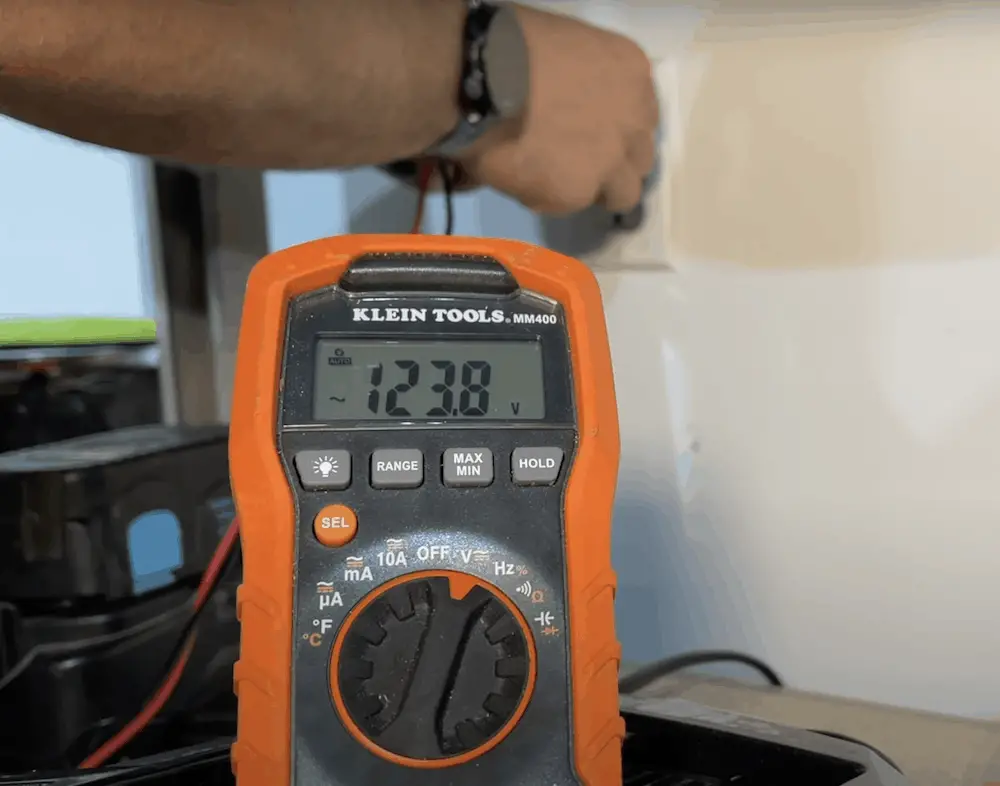One of the most common tools in electrical repair work, especially for DIYers, is a non-contact voltage tester. It’s convenient, easy to get close to the wire, and it will show you if the power is cut off so you can safely get to work. However, depending on the model and brand of your voltage tester, there is a potential safety issue that should be on your radar.
In this blog, we’ll test the difference between two Klein tools – NCVT-3 and NCVT-3P. The goal is to highlight the slight difference in functionality to help you minimize your risk of injury. I’ll also mention two other tools to consider adding to your homeowner’s toolkit: outlet testers and digital multimeters.
Tools:
DISCLAIMER: This blog contains affiliate links, which means that if you click on one of the product links, I’ll receive a small commission.
Rather watch instead of read, check out this video below! 👇
SAFETY NOTE: We will talk about the Klein Tools NCVT-3 and NCVT-3P in this article but it should be noted that Klein Tools issued a voluntary recall for the NCVT-1 with a date code ending in “H1.” For more information refer to Klein Tools Recall page.
First, how do non-contact voltage testers work?
The primary purpose of a non-contact voltage tester is to create a quick, easy, and safe way to detect if power is on to a receptacle (or wire, light switch, etc). A non-contact voltage tester works by detecting the electrical field created when AC voltage is present.
It is important to build the practice of testing on a known circuit where you have the power on confirming your non-contact voltage tester is performing correctly prior to testing the circuit in question. I have even heard from many viewers of my YouTube channel they test on a known circuit, then test on the circuit in question, and finally end on the known circuit. This will provide validation points before and after testing the circuit you are going to work on and give you 100% confidence in the reading from your tester.
Testing 2 non-contact voltage testers: Klein NCVT3 & Klein NCVT3P
I used each tester on the same source to show the similarities and one critical difference between the two.
1. Klein NCVT3

When I turn the tester on, it does a small check and a blue light comes on, indicating power. That’s it. So now, I would test the receptacle and it would show a red LED and produce an audible alarm if there was voltage detected.
2. Klein NCVT3P

After powering the Klein NCVT3P on, it acts similarly to the one above, detecting the hot side. Once you get it close to a hot live source, it turns red or blue depending on the voltage.
***THE KEY DIFFERENCE: the NCVT3P has a green LED which is always on, a strong indicator that the power is on and the voltage tester is actually testing for voltage.****
Why does it matter if there’s a green LED light indicating the tester is testing for voltage?
It’s a small difference, but it could lead to a lot of issues when you’re testing a circuit. Why? You could get a false negative because the “no voltage” state for the NCVT-3P looks very similar to the state when the NCVT-3P has dead batteries and the tester is not able to check the voltage in the circuit.
Here’s how this scenario could happen: If you’re a standard homeowner, you probably turn on your outlet tester once or twice a year. There’s a chance you could turn on your tester – hear a beep that it’s on – and proceed your test.
But if the battery dies after you turn it on, you could still think it’s on and use it without realizing it’s not as your batteries only have a small amount of charge. Worst case scenario, you get a false negative because of the low battery, think the switch or receptacle has been turned off when it’s still on, and ultimately, put yourself in a very dangerous situation.
Other tool options if you’re doing electrical work around the house:
1. Outlet Tester

Unlike the non-contact voltage testers, these outlet testers are not battery-powered. When you plug them in, they have three LEDs in a different combination to show if a receptacle is wired correctly. Or if you have an open ground or neutral, it will help you diagnose the issues. These are very common in home inspections and commonly how the home inspector determines if your outlets have a ground wire.
2. Digital multimeter

Digital multimeters will allow you to measure the exact voltage. You can also measure at your light switch or if you are measuring lower voltage, which could indicate some kind of issue in your circuit. Make sure you have a resistance check setting so you can do continuity checks – and ensure it’s able to measure capacitance – so you can troubleshoot issues in HVAC systems. This could save you from an expensive repair call in the future by allowing you to troubleshoot more issues.
*Bonus* 4 Electrical home repair safety tips
Here are more safety tips to keep in mind when you’re doing any projects that involve electrical wiring.
- If you’re in a house with little ones, cover your outlets with plastic covers to avoid shocks and injuries or even better install Tamper Resistant (TR) receptacles in your home
- NEVER work on a circuit which is “hot”
- When in doubt, always consult a professional – and even if you don’t have doubt but you want to double-check yourself- still consult them!
The Wrap Up
When purchasing a non-contact voltage tester, make sure you have some type of indicator that shows you have battery power, so you know with certainty the non-contact voltage tester is able to actually measure the circuit. And be sure you understand all your tools -so that you can use them properly, efficiently, and most of all, safely.



